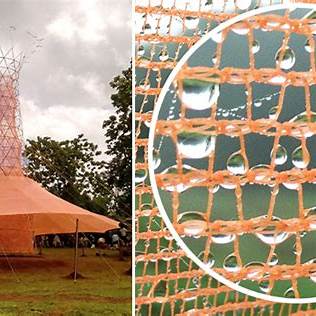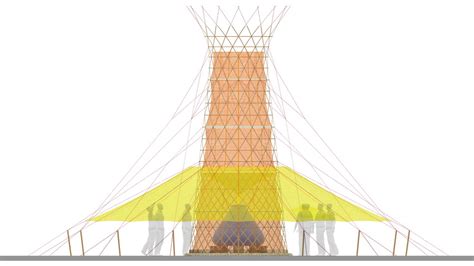Warka Water tower
AWG
Warka Tower is a passive water harvesting system that collects potable water from the atmosphere, providing an alternative water source for rural populations lacking access to clean drinking water.
Contact

Warka Water
Info
Available

Looking


Looking to expand internationally
Project location
Awards and certifications
Energy Globe National Award
Recognized for its innovative approach to environmental sustainability, Warka Water received this award for providing clean water solutions to rural communities.
The Design Prize – Social Impact Category
Awarded for its outstanding social impact, Warka Water was recognized for its sustainable design and efforts to improve living conditions in underserved areas
World Design Impact Prize
Warka Water received this prestigious award for its impactful design that addresses critical social needs by providing access to clean water through sustainable means.
Project description
The Warka Tower is the flagship project of Warka Water, designed to provide a sustainable and decentralized source of potable water in remote, rural communities that lack access to clean water infrastructure. The tower is an innovative, low-cost structure that passively collects water from the atmosphere—harvesting rain, fog, and dew—using a simple system that requires no electricity and operates entirely off-grid.
Standing around 10 meters tall, the Warka Tower is constructed with biodegradable and recyclable materials such as bamboo, rope, and mesh fabric. Its lightweight and modular design allows for easy transportation, assembly, and maintenance by local villagers, using traditional construction techniques. The internal mesh captures airborne moisture, which condenses and drips into a reservoir at the base of the tower, providing between 40 and 100 liters of clean water per day, depending on environmental conditions.
More than just a water source, the Warka Tower is designed to be a community hub—a gathering place shaded by its canopy, where people can meet, learn, and share. It restores dignity to communities by reducing dependency on external aid, especially for women and children who often bear the burden of walking long distances to fetch water. The project is a symbol of resilience, cultural integration, and environmental harmony.
Objectives
🌍 Core Objectives
-
Provide Access to Safe Drinking Water: Design and implement systems like the Warka Tower to harvest potable water from the atmosphere in regions lacking conventional water infrastructure.
-
Enhance Sanitation and Hygiene: Develop sanitation facilities that convert human waste into compost, promoting hygiene and environmental sustainability.
-
Promote Sustainable Agriculture: Introduce modular gardens that utilize harvested water to grow food, supporting food security and nutrition.
-
Improve Housing Conditions: Construct eco-friendly shelters using local materials, inspired by traditional architecture, to provide dignified living spaces.
-
Facilitate Renewable Energy Access: Implement solar energy solutions to provide electricity for lighting and charging devices, enhancing quality of life.
-
Foster Community Engagement and Education: Create communal spaces under structures like the Warka Tower for gatherings and educational activities, strengthening community bonds.
-
Preserve Cultural Heritage: Incorporate local traditions and knowledge into project designs, ensuring cultural relevance and community acceptance.
-
Promote Environmental Stewardship: Engage in activities that protect and restore natural ecosystems, such as rainforests, and support indigenous populations facing discrimination.
Through these objectives, Warka Water aims to empower communities by addressing fundamental needs with sustainable and culturally sensitive solutions.
Impact & Achievements
The journey of the Warka Tower began with a visionary idea in 2012, when architect Arturo Vittori conceptualized a lightweight, passive structure capable of harvesting water from the atmosphere to serve communities in need. Inspired by the Ethiopian Warka Tree—a central gathering place in rural villages—the tower was designed to offer not only clean water, but also a space for social connection.
In 2015, the first full-scale prototype was successfully installed in Dorze, Ethiopia, marking a major milestone. The pilot demonstrated the tower’s ability to collect up to 100 liters of potable water per day through condensation, dew, and rain. This early success showcased the viability of the design and opened the door for international recognition.
Over the following years, Warka Water expanded its reach, introducing the Warka Tower to communities in Cameroon, Haiti, Togo, Colombia, and India. These projects not only delivered clean water but also included training programs to ensure locals could assemble, maintain, and take ownership of the systems.
In 2016, the Warka Tower won the World Design Impact Prize, awarded by the World Design Organization, solidifying its status as a globally recognized innovation. In 2019, it received The Design Prize for Social Impact in architecture and design.
By the early 2020s, Warka Water began developing integrated solutions—combining the Tower with Warka Sanitation, Warka Garden, and Warka House—as part of a broader model for sustainable, self-sufficient villages. The most prominent example is the Warka Village project in Cameroon, which includes a cluster of these technologies designed to meet the basic needs of an entire community.
Today, Warka Tower stands as a symbol of dignity, environmental stewardship, and human-centered design. Its impact spans not only access to clean water but also empowerment, education, and improved health outcomes for thousands of people in rural areas around the world.
How can you get involved
Individuals can support Warka Water's mission through various means:
- Donations: Contribute financially via the Donate button on this page
- Awareness: Share information about Warka Water's projects on social media to increase visibility.
- Partnerships: Organizations can collaborate with Warka Water to implement projects in new communities.
- Volunteering: Opportunities may be available for individuals with relevant skills to assist in various projects.
By engaging in these ways, supporters can help Warka Water achieve its goal of providing sustainable solutions to essential human needs in underserved communities.
About the NGO
Ask about Warka Water tower
Hi there! I’m here to help you quickly understand what this green solution is about — without needing to read the full page.
You can ask me things like:
- What problem does it solve?
- How does it help the environment?
- What makes it different?
Let’s explore together!
You can try asking:
Oops, it seems like you're not a member.
Sign up! It's free. You'll be able to read all the articles you like, download PDFs, and get in contact with the respective owners.
Have an account already? Sign in here



